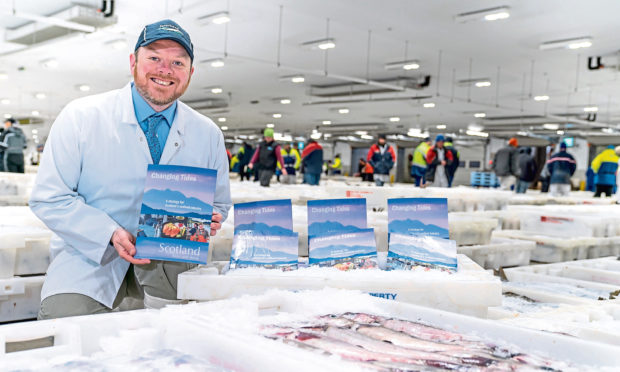A blueprint for unlocking a larger share of a £100 billion-plus global market has been unveiled by industry body Seafood Scotland.
The 18-point “action plan” – Changing Tides – is aimed at growing sales of Scottish seafood to “Brussels, Boston, Beijing and beyond”.
It is also expected to help double the total turnover of this country’s food and drink industry, in line with the national Ambition 2030 strategy, to £30bn by the end of the next decade.
The document sets out 18 challenges needing attention in areas ranging from marketing and investment to skills development and post- Brexit recruitment.
It comes just a few days before the world’s largest seafood trade event –Seafood Expo Global/Seafood Processing Global – gets under way in Brussels.
Patrick Hughes, head of Seafood Scotland, said: “Changing Tides is the beginning of a process to clearly set out the steps required to help the Scottish seafood sector reach its long-term potential.
“Our reputation for quality and sustainability has seen Scottish seafood travel all over the world, and with additional support from partners at home, the industry can sustain the status quo and go on to achieve significant growth.
“Brexit, or at least the ongoing negotiation, is happening now – but this action plan sets out a clear strategy for the next few years.
“Undertakings laid out in Changing Tides are necessary to move the industry forward. Without action we will be unable to realise the industry’s full potential.”
Scotland Food and Drink chief executive James Withers said the seafood “roadmap” would play a big part in unlocking the £30bn target of Ambition 2030.
And in the paper’s foreword, Fisheries Secretary Fergus Ewing says it will help deliver the next steps in driving the seafood sector through “these uncertain times” and beyond.
Mr Ewing adds: “Key building blocks are the need for sustainable management of resources and a willingness to innovate, helping to create investment and maintain high-value jobs, often in the most remote and rural communities in Scotland.”
Marketing funding and retaining skilled workforce are key concerns
The Changing Tides document includes 18 “actions” which Seafood Scotland hopes can be delivered by industry organisations and enterprise bodies, as well as local and national government.
These are arranged around four key themes: marketing; people and skills; investment and innovation; and the supply chain.
Seafood Scotland says the trade body will focus on securing marketing support for developing home and international markets.
It adds: “Our industry needs secure and long-term funding to promote Scottish seafood at home and abroad and strengthen our brand. However, the funding of Seafood Scotland is uncertain and inflexible.
“This undermines efforts to market Scottish seafood, and puts in doubt the support available to exporters or potential exporters.
“Putting in place strong and continuous marketing support would allow a promotional push at home to consumers, and allow us to develop promotional and educational programmes that incorporate seafood into the wider food education programme.”
A review will take place into alternative funding streams for marketing.
The document also highlights concerns about workforce requirements post-Brexit.
It says: “There are particular concerns in the processing sector and in areas of almost full employment, where there is a heavy reliance on EU workers.
“In the Grampian region, 70% of total reported workers in the processing sector were citizens of other EU countries in 2016; the rest of Scotland averaged at 57%
“In the short and medium term future, it will be extremely difficult to replace EU workers with local workers with the relevant skillsets.
“Arrangements around immigration and work permits post-Brexit must take account of the needs of the seafood industry, and its importance to the Scottish economy.”
